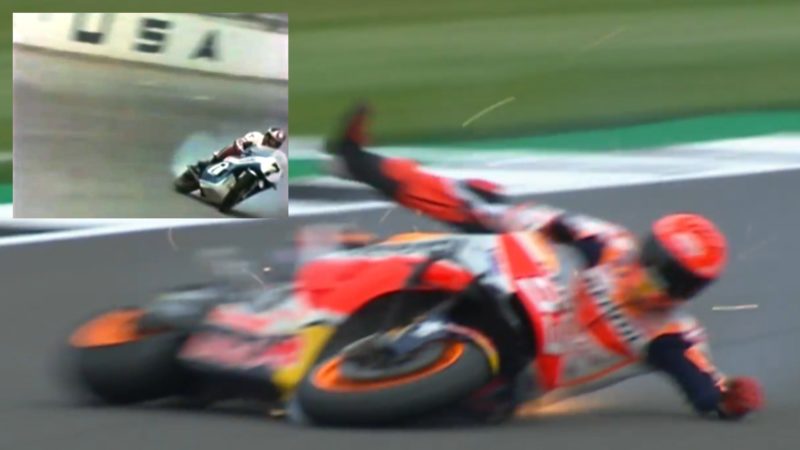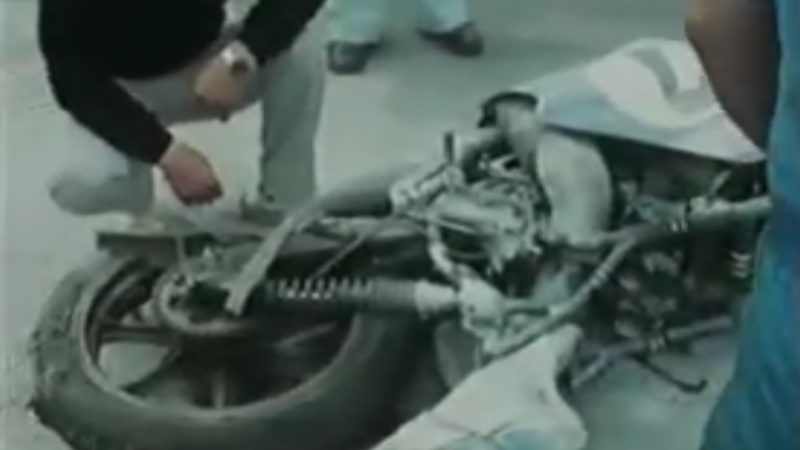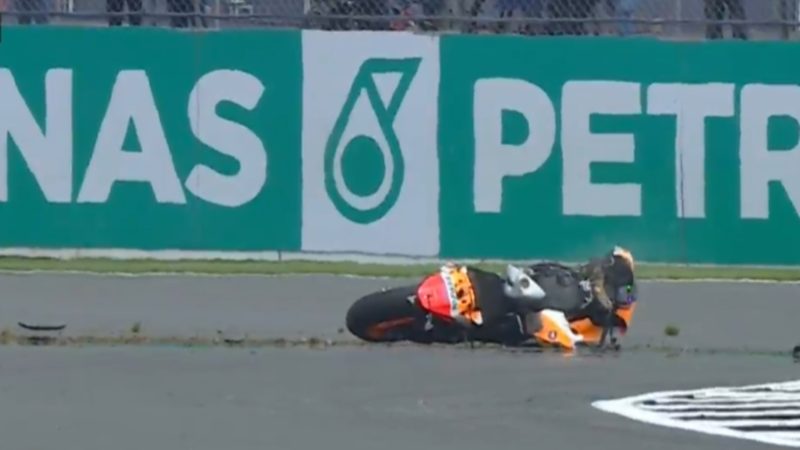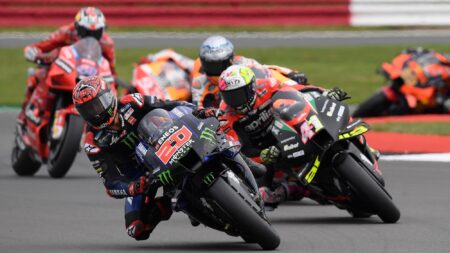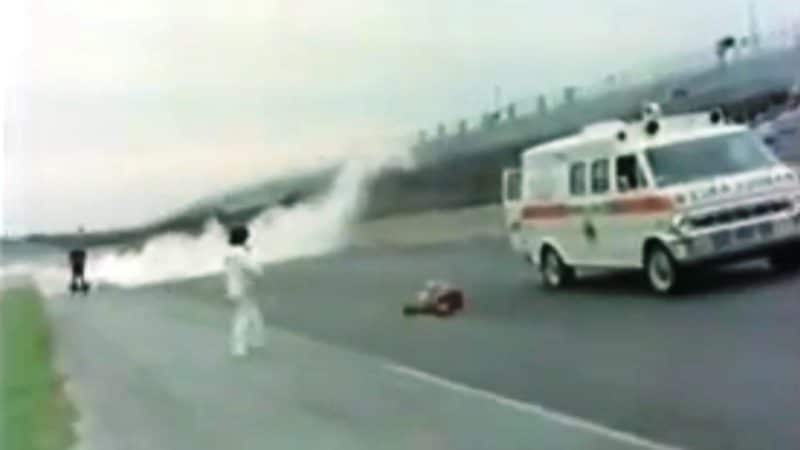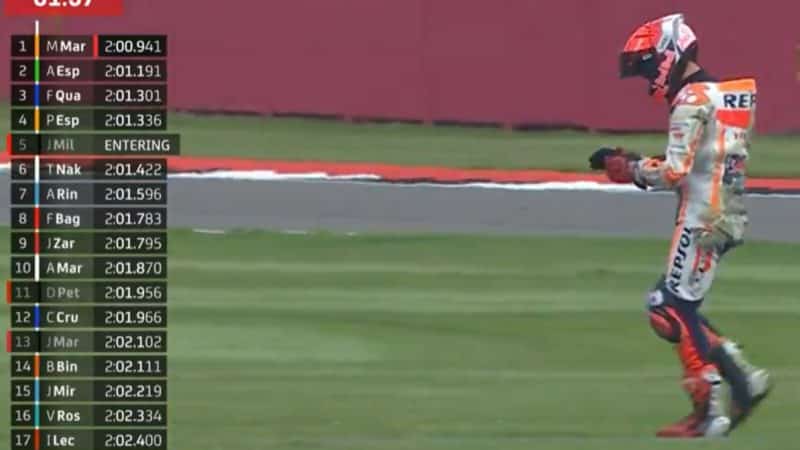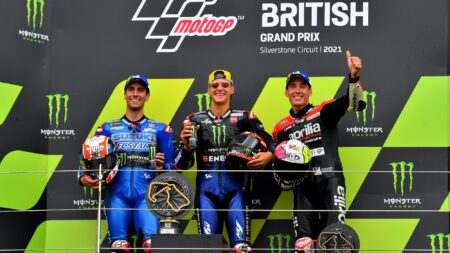Forty-six years after Sheene’s Daytona accident Marc Márquez was preparing his Repsol Honda RC213V for the 2021 British GP at Silverstone. He was already fastest in Friday morning’s FP1 session when he commenced his final run on the same soft/medium tyres he had used throughout the session.
He had started his first flying lap and was heading towards Turn Two, a 100mph left-hander, when the front tucked and down he went, at 170mph. Most likely his front tyre wasn’t up to optimum working temperature, due to the chilly weather and strong winds.
“I went out in FP1 and felt very, very good on the bike and I was able to ride like I want,” he said. “Unfortunately we had a big crash at the end of the session,” said Márquez, apparently unfazed by such a high-speed shunt, which, to be fair, was almost 40mph slower than his 2009 crash at Mugello in 2013, MotoGP’s fastest.
True, the Sheene and Márquez accidents were not identical. Sheene was thrown from his XR11, while Márquez took the low-side exit from his RC213V, but they were more alike than you might think.
Sheene tumbled along the Daytona asphalt for a couple of hundred metres, while Márquez slid down the road at Silverstone for a hundred metres until he reached the trackside grass, which threw him into a nasty barrel roll. He rolled over and over, at least a dozen times, tucking in his arms, finally coming to rest back on the track between Turns Three and Four.
Sheene’s crumpled body was loaded into an ambulance, with those attending him fearing or his life. Márquez briefly knelt on all fours, getting his breath back, then stood up and, although he didn’t look that steady, was able to walk away and return to his garage for a post-session debrief.
